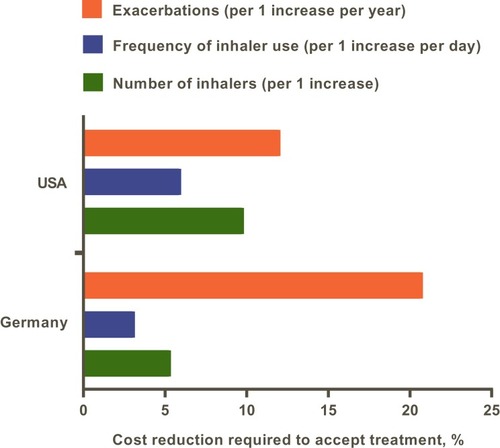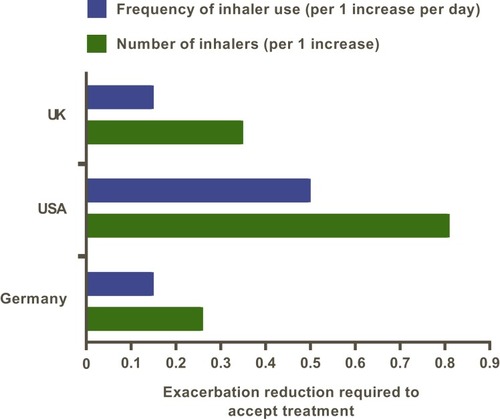Figures & data
Table 1 Discrete Choice Experiment (DCE) Attributes and Levels
Table 2 Example Discrete Choice Experiment (DCE) Choice Set
Table 3 Participant Characteristics
Figure 1 Drivers of choice in the discrete choice experiment (DCE).
Abbreviations: CI, confidence interval; DCE, discrete choice experiment; OR, odds ratio; UK, United Kingdom; USA, United States of America.

Figure 2 Marginal rate of substitution (MRS) for a reduction in cost relative to current maintenance therapy cost.
Abbreviations: MRS, marginal rate of substitution; UK, United Kingdom; USA, United States of America.

Figure 3 Marginal rate of substitution (MRS) for a reduction in exacerbations.

Table 4 Uptake Probability, Exacerbation Trade-Off and Willingness to Pay for a Switch from Two Inhalers Twice Daily to a Single Inhaler Once Daily
